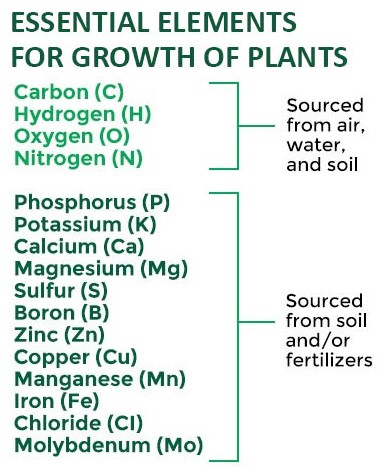Agriculture
Refroming Nutrient-Based Subsidy Regime
- 20 Oct 2020
- 7 min read
This article is based on “Tinkering at margins” which was published in The Indian Express on 19/10/2020. It talks about the issues related to the Nutrient-based subsidy regime for fertilizers.
It's been over a decade since the Nutrient-based subsidy (NBS) regime for fertilisers was instituted. NBS envisaged linking subsidy to nutrient composition rather than products per se.
NBS was expected to wean away farmers from applying too much urea containing only nitrogen and increase the consumption of P&K fertilizers which will result in balanced fertilization.
After the launch of NBS, the fertiliser consumption has increased manifold over the years. However, similar gains are not visible in the food grain production or improvement of soil health. Hence, an urgent need has arisen for a rethink on the overall fertilizer subsidy policy in India.
NBS and It’s Rationale
- Under NBS, the fertilizers are provided to the farmers at the subsidized rates based on the nutrients (N, P, K & S) contained in these fertilizers.
- Apart from this, fertilizers which are fortified with secondary and micronutrients such as molybdenum (Mo) and zinc are given additional subsidy.
- Under this Policy, the subsidy on Phosphatic and Potassic (P&K) fertilizers is announced by the Government on an annual basis for each nutrient on a per kg basis.
- These rates are determined taking into account the international and domestic prices of P&K fertilizers, exchange rate, inventory level in the country etc.
- NBS policy intends to increase the consumption of P&K fertilizers so that optimum balance (N:P:K= 4:2:1 ) of NPK fertilization is achieved.
- This would improve soil health and as a result the yield from the crops would increase resulting in enhanced income to the farmers.
- Also, as the government expects rational use of fertilizers, this would also ease off the burden of fertilizer subsidy.
- It is being implemented from April 2010 by the Department of Fertilizers, Ministry of Chemicals & Fertilizers.
Issues Related to NBS
- Urea Outside NBS: The urea remains under price control and NBS has been implemented only in other fertilisers.
- The price of fertilisers (other than urea) — which were decontrolled have gone up from 2.5 to four times during these 10 years. However, since April 2010, the price of urea has been raised by hardly 11%.
- This has led to farmers using more urea than before, which has further worsened fertiliser imbalance.
- Economic & Environmental Cost: Considering that fertilizer subsidy is the second-biggest subsidy after food subsidy, the NBS policy is not only damaging the fiscal health of the economy but also proving detrimental to the soil health of the country.
- Diversion of Urea: Subsidised urea is getting diverted to bulk buyers/traders or even non-agricultural users such as plywood and animal feed makers.
- It is being smuggled to neighbouring countries like Bangladesh and Nepal.
Way Forward
The government has launched a slew of reforms regarding the use of urea, which includes compulsory neem-coating of all urea and directly making fertiliser subsidy payment to companies. However, these measures merely address the diversion of urea, but they don’t fix the real problem — of overuse by farmers themselves. Therefore, following steps can be taken by the government:
- Direct Benefit Transfer (DBT) in Fertilizers: DBT scheme can bring benefits to the farmer on various fronts; choice of improved products at competitive rates, gain from enhanced extension services from the industry on best practices leading to "sustainable and responsible" agriculture production, and better earnings for such produce.
- However, DBT in fertilizers must be preceded by holistic financial inclusion in rural areas.
- Enabling Last-Mile Connectivity: Affordable and workable" last mile" technologies can enable the Government to set up the required framework for disbursal, which in turn will allow for focused targeting of subsidy based on land, crop, soil health and other geographical factors.
- Bringing Urea Under NBS: In order to address the imbalance in the fertilizer use, urea has to come under NBS.
- A feasible way to do it is by hiking urea prices and simultaneously reducing the NBS rates of phosphorus, potash and sulphur to make other fertilisers cheaper.
- Long Term Reform: In the long run, NBS itself should be replaced by a flat per-acre cash subsidy that could be used to purchase any fertiliser. That includes value-added and customised products containing not just other nutrients, but delivering even nitrogen more efficiently than urea.
Conclusion
Considering that all three nutrients namely N (nitrogen), P (phosphorus) and K (potassium) are critical to increasing crop yields and quality of produce, the Government must necessarily go for a uniform policy for ail fertilisers. Thus to begin with, the subsidy regime, covering both subsidy rates and payment terms, urea should be brought in sync with P&K fertilisers.
|
Drishti Mains Question Due to economic and environmental implications associated with Nutrient based subsidy for fertilizers, there is an urgent need for a rethink on the overall fertilizer subsidy policy in India. Discuss. |
This editorial is based on “No great escape: On India’s low rank on nutritional indices” which was published in The Hindu on October 19th, 2020. Now watch this on our Youtube channel.





